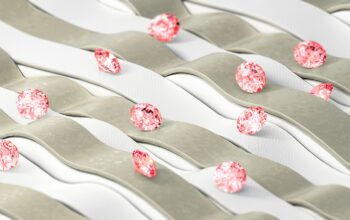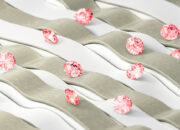The iridescent colors observed in butterfly wings are a source of great fascination, inspiring both scientific inquiry and artistic representation. This phenomenon, often labeled as photonic structures, arises not from pigments but from the intricate microstructures that manipulate light. Understanding the underlying principles of these biophotonic effects not only unravels nature’s artistry but also holds potential for advancements in material science, nanotechnology, and optoelectronics.
At the core of this optical marvel lies the interplay between the microstructure of the wings and the interaction of light. Butterfly wings are composed of layers of chitin, a biopolymer that is both lightweight and structurally sound. The scales on the wings are usually arranged in overlapping layers, forming intricate patterns that vary in thickness, orientation, and spacing. When light strikes these scales, it is subject to various optical phenomena such as refraction, reflection, and interference. The outcome is a complex display of colors that can change depending on the angle from which the wings are viewed, a property known as angle-dependent color variation.
Two primary mechanisms contribute to the dazzling effects seen in these wings: structural coloration and pigmentation. Structural coloration, a process whereby the color is produced not through absorption but through the interaction of light with nanostructures, is predominant in many species of butterflies. For instance, the Morpho butterfly’s wings exhibit vibrant blues created by microscopic ridges that interfere with specific wavelengths of light. In contrast, pigments absorb certain wavelengths while reflecting others, resulting in the hues we typically associate with color. Understanding this dichotomy offers insight into how evolution has shaped these visual traits in response to environmental pressures such as predation and mating rituals.
Recreating the structural coloration of butterfly wings in laboratory settings requires a deep exploration of materials science and optics. Recent advancements have enabled researchers to synthesize materials that mimic these natural photonic structures. By employing techniques such as 3D printing, self-assembly, and layer-by-layer deposition, scientists can fabricate photonic crystals that replicate the iridescence observed in butterfly wings. These artificial structures are not merely academic exercises; they have practical applications in a myriad of fields. For example, photonic structures can enhance the efficiency of solar cells by directing light to optimal absorption pathways or improve the performance of displays by providing vivid colors without the need for energy-intensive lighting methods.
Furthermore, the significance of mimicking nature extends beyond aesthetics and functional improvements. The principles behind structural coloration have ecological implications as well. For instance, the vibrancy of a butterfly’s wings can impact mate selection within species, promoting genetic diversity and adaptation in ever-changing environments. Additionally, these studies advance our understanding of biomimicry—the practice of drawing inspiration from nature to solve human challenges. By understanding and replicating the mechanisms of structural coloration in butterfly wings, we can innovate more sustainable technologies that align with natural processes.
The allure of butterfly wings also extends into the realm of art and design. The vibrant, ever-shifting colors inspire artists and designers worldwide, encouraging a fusion of science and creativity. Textile industries are beginning to explore how to integrate these principles into fabric design, leading to garments that change color in response to light and angle. This intersection between science and art illustrates the profound aesthetic appeal that arises from an understanding of the underlying physical principles.
Despite the advances in replicating these phenomena in the lab, challenges remain. Achieving the precision required to mirror the exact scales and structures found in natural butterfly wings is not trivial. Factors such as scale, environmental stability, and cost-effectiveness present barriers to the widespread implementation of these biomimetic designs. Nevertheless, continued interdisciplinary collaboration between biologists, materials scientists, and engineers will pave the way for overcoming these hurdles.
In conclusion, the study of butterfly wings and their color manipulation offers a captivating lens through which to appreciate the intersection of biology, physics, and material science. The fundamental principles underlying structural coloration serve as a testament to nature’s innovation and adaptability. By engaging with these intricate mechanisms, not only do we unlock the secrets of this aesthetic phenomenon, but we also equip ourselves with the knowledge to develop advanced materials with practical applications that echo the beauty and functionality found in the natural world. The journey of recreating nature’s color trick serves as both a scientific challenge and an artistic endeavor, resonating with the curiosity that drives human exploration and creativity.












